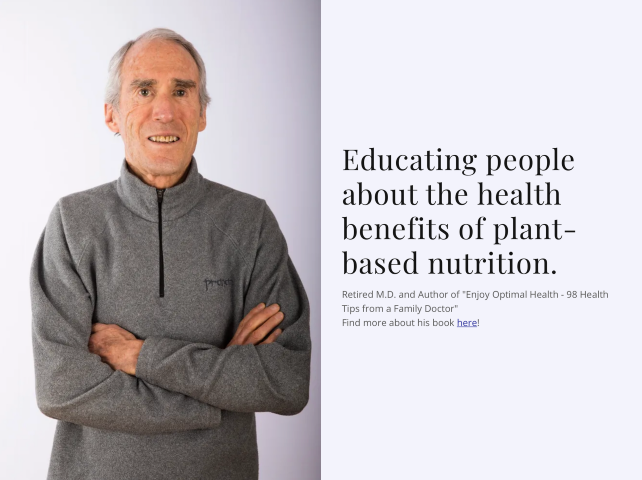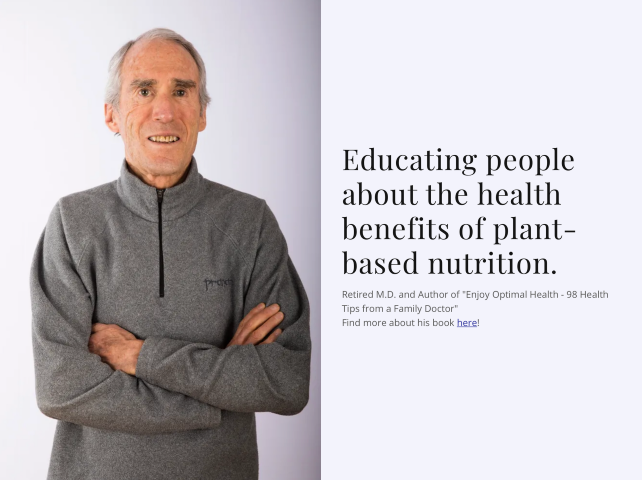Health column by Dr. Greg Feinsinger. Champion of Whole Food Plant Based Living and righteous person.
In 2017, long before COVID, Dr. Robert Pearl said in his book “Mistreated” that the American medical system is based on treating rather than preventing disease, resulting in needless suffering, death, and high costs.
Immunizations are example of what our health care should be all about: prevention of disease. In his 2017 book Dr. Pearlman noted that: “Extending the full benefits of immunization to every person worldwide by 2020 would prevent an estimated 20 million deaths—mostly in children—and untold suffering from blindness, paralysis, and deafness for millions more.” Immunizations involve vaccines that mobilize our natural defense mechanisms, resulting in antibodies that prevent disease, without causing us to experience the disease.
Let’s look at some examples of the the immunization success story. Before DPT shots were available, thousand of Americans of all ages died annually from diphtheria, pertussis (whooping cough), and tetanus. Before the polio vaccine became available in the 1950s, thousand of people died or suffered lifelong paralysis annually from paralytic polio. Before the Hib vaccine became available in 1987, there were thousand of cases yearly in the U.S., causing meningitis, mental retardation, and deaths. Before the MMR shot was available, thousands of children and adults died annually from measles or suffered from permanent neurologic deficits such as deafness; many children and adults suffered from mumps; and rubella (German measles) caused fetal deaths and birth defects. There are many more success stories with other vaccines, such as influenza and shingles.
There are two vaccines that prevent cancer: One is the HPV vaccine, which prevents the sexually-transmitted wart virus that is the cause of cancer of the cervix, and which can also cause cancer of the mouth and throat via oral sex. The second is the hepatitis B vaccine, because chronic hepatitis B causes liver cancer.
Are vaccines safe? The answer is yes—very. People can have minor side effects such as fever and irritability in kids, and local or sometimes generalized aching in adults. The incidence of serious side effects such as allergic anaphylactic reactions are extremely rare—about one per million vaccinations—and are treatable. A good analogy of risk vs benefit with immunizations is wearing seatbelts in your car: very rarely someone is in an MVA in which their car goes in the river, and they drown because they can’t get their seatbelt off. However, you are multiple times more apt to die in an MVA from failure to wear seatbelts.
Let’s look at COVID vaccines. Scientists have been studying coronaviruses for 50 years and have been researching vaccines since the SARS outbreak in 2002. So, although it’s amazing that they came up with COVID vaccines so quickly, they weren’t starting from scratch. Over 285 million COVID doses have been given in the U.S. so far, apparently with no deaths and with very few serious side effects. And the COVID vaccines are very effective in preventing infection, and even more so in preventing serious disease and death—although not quite 100 percent. We know the side effects of not getting vaccinated—over 600,000 deaths in the U.S., and persistent symptoms called “long haulers syndrome” in a significant percentage of COVID patients, including young people.
Deaths and disability from COVID are decreasing, and life is slowly returning to normal. The only way we’re going to completely conquer the disease is to reach herd immunity, which probably involves immunizing at least 80 percent of the U.S. population. Unfortunately, we’re living in an era of conspiracy theories and other misinformation on the internet. For reliable, evidence-based information go to sites such as the CDC, WHO, Harvard Med, Mayo Clinic, and WebMD.



